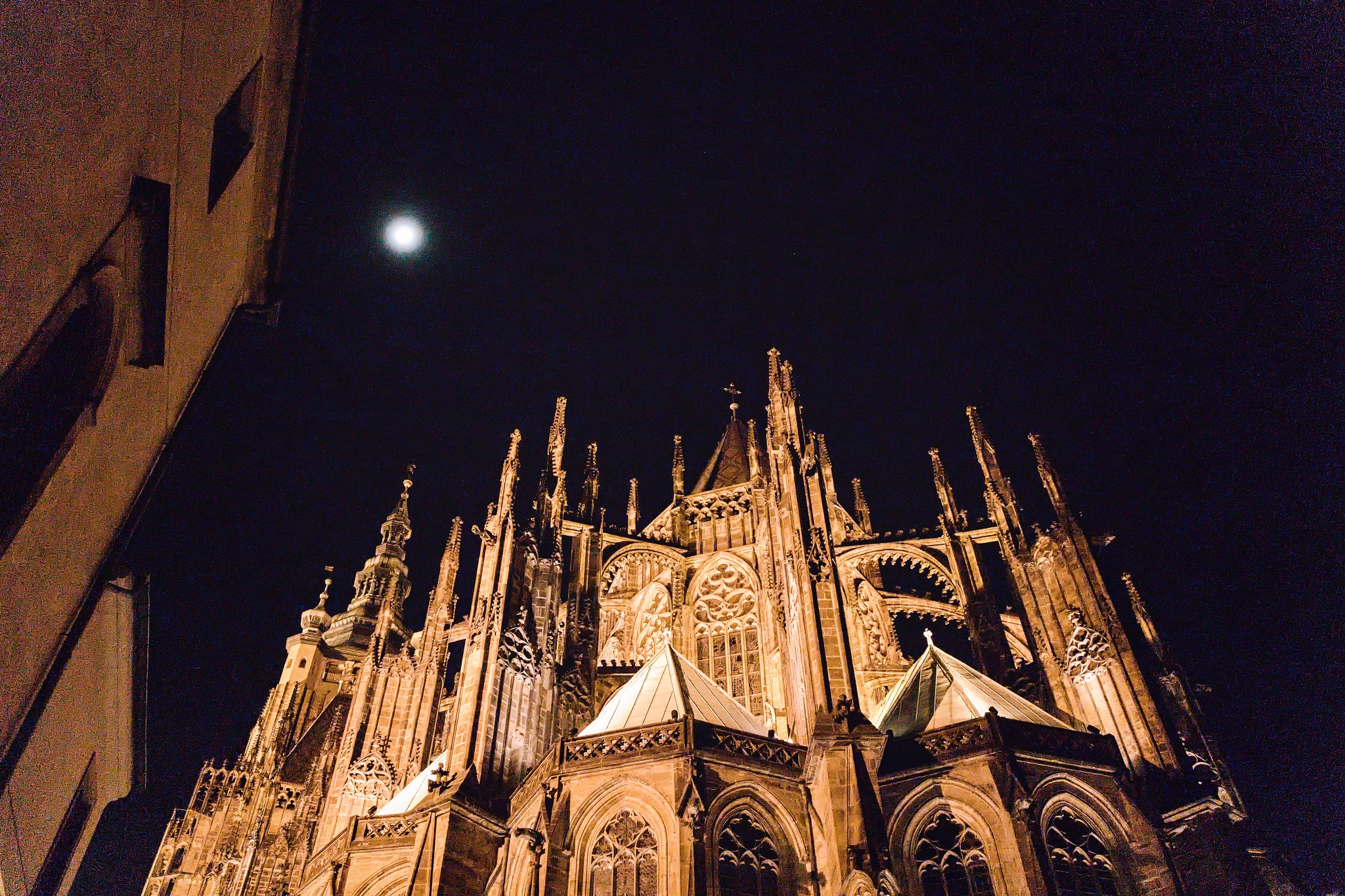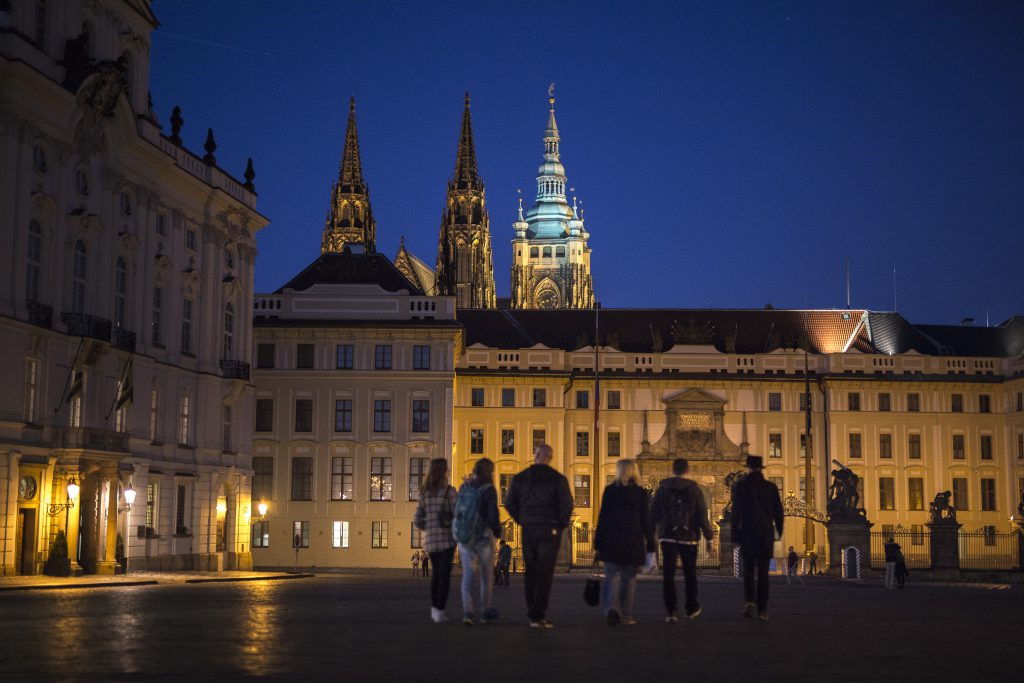
Magic Prague, City of a Hundred Spires, City of Fate…these are all names associated with Prague, and rightly so. From its establishment, Prague has had a magical, mystical feel and a deep-rooted connection to the spiritual. From the first named people group to inhabit these parts, the Celtic Boii, came Prague’s mystic druid beginnings. The Slavic tribes that followed brought their own flavour of pagan spirituality, which was slowly absorbed and interwoven into the Christianity introduced to the Bohemians of 10th-century Prague. Each mark of history on her journey through Prague carved a deeper, more distinct trail, leading to the next unfolding of magic within her essence. Alchemy is the most recent, and perhaps the most captivating, of these tracks.
Call it the perfect marriage of a spiritually drenched city and the modern sophistication that comes with being the seat of authority for the Holy Roman Empire. Rudolf II was drawn to the mysticism of Prague’s past and wanted to further his own occult interests while prompting his Empire into the next realm of enlightenment and modernity through alchemy.
Avoid the crowds at Prague Castle with a mystery tour of alchemy and astrology, taking you to magical locations like New World, Strahov Monastery or Prague Loreto.
3 hour tour | from 26 €
Explore hidden places in Old Town and fill your evening with ghost stories and legends full of death, poverty, misery, or murder.
1,5 hour tour | from 16 €
Discover the history of psychiatry and learn about the development of Prague’s famous psychiatric hospital on its vast grounds.
3 hour tour | from 26 €
The alchemy in Prague was magical and mystical, yet deeply rooted in science. The techniques used by the alchemists such as sublimation, distillation, and the codifying of their discoveries, plus the way they recorded their experiments for further knowledge and reproduction are all methods commonly relied upon in modern science. Alchemists throughout Europe made veritable contributions to science and contemporary economy and medicine with discoveries such as phosphorous, zinc, metallic arsenic, the creation of porcelain (which had previously been a lucrative Chinese industry), and the proposition that illness or disease was caused by foreign bodies that could be chemically treated.
All throughout Europe, including Prague, many alchemists were thought of as charlatans, yet Rudolf II believed in their ability to find the hidden ultimate truth embodied in the base elements. He read occult books voraciously, studying the secret passages the way that theologians study ancient texts of the Bible. He worked his own experiments in a personal laboratory on the castle hill in Prague, earning him the nickname the Mad Emperor and the Crazy Alchemist. He even hired some of the leading alchemists of his time from around Europe to come to Prague for patronage. Under his provision, many alchemists and astrologers studied, experimented, and wrote in laboratories (some obvious and others hidden) throughout the city.
Among the more interesting and well-known personalities working for the Emperor in Prague were men such as Edward Kelley and John Dee. John Dee taught mathematics in England, advised the Queen (and many believe was her spy), held consultations with Emperor Rudolf II, met with other noblemen and kings of the time, and collaborated with Edward Kelley. Dee eventually discontinued his alchemy work with Kelley in Prague, returning to England when he was about 60 years old. But, his fellow countryman, Kelley, remained at court with Rudolf II.
Kelley worked on the castle hill with other alchemists in a grand, elaborate laboratory designed and paid for by none other than Rudolf II. It was set up in the Mihulka Tower (also currently known as Powder Tower for its subsequent stint as a cannon bastion and later being used as a storehouse for the military’s gunpowder). The Emperor closely monitored their work, following their minor successes and sometimes major failures along the path to discovering the Philosopher’s Stone.
The work Kelley did in Milulka Tower was largely encouraged by his claim to be able to transmute base metals into gold. Rudolf II believed Kelley when he said he had the key to unlocking the secret process of finding or creating the Philosopher’s Stone. This greatly enticed Rudolf II to further sponsor Kelley’s work. He wanted to have more gold, eternal youth, unlimited health, and all the other benefits that the Stone possessed. But, in turn, when it became obvious that Kelley could not produce what he had promised, Rudolf II had him arrested and imprisoned.
First, he was imprisoned in the Křivoklát Castle and then again in the Hněvín Castle in Most. Even though he was allowed a full range of movement on the castle grounds (basically, he was on house arrest) the famous, or rather, at the time of his imprisonment, the infamous Kelley tried to escape from his prison. He was unsuccessful in his attempt, only gaining a broken leg in the process, thus ironically further limiting his movement. Eventually, he drank poison and died shortly afterward. But, during his imprisonment periods, according to some sources, Kelley was also held prisoner in Golden Lane’s White Tower.
This tower prison was intended for housing prisoners of noble ranks. The people housed there were often granted more freedoms than in other prisons, being able to roam the halls freely by day, but it was still a prison and the prisoners still often met unpleasant fates. Most notably, some of the noblemen from the Estates Uprising (Battle of White Mountain) were held here before their execution on Old Town Square in 1621.

But, Kelley and Dee were not the only alchemists working for Rudolf II. Nor were the Emperor’s alchemists the only ones in the city who were working to unlock the secrets of the universe through their dark art. Deep under Kozí Street in Old Town, alchemy was performed beneath one of the oldest homes in Prague. It was a secret laboratory (not discovered until 2002 when a great flood washed out part of the street covering it) located where a series of tunnels converged. Based on the journals and recipes found, and the fact that one of the tunnels led directly to the castle, it seems that these alchemists secretly worked directly for the emperor or at least cooperated with his alchemists on Castle Hill.
Another house in Old Town, on Žatecká Street is also known to have been the dwelling of several alchemists in Prague. The locals all believed that these men had made a pact with the devil to work their magical brand of alchemy. When, eventually, the men went missing and the only clue to their whereabouts was a hole in the roof, it cemented local lore into “truth” that the alchemists were doing the devil’s work.
Whether the alchemists in Prague were charlatans, mad men, precursors to chemists, or magicians, they each added a unique flavor to the melting pot of Prague Alchemy…a flavor that is still evident even today when walking the 21st century streets of Prague. If you want to know more about this mystical era of Prague, join us on our Alchemy & Mysteries of Prague Castle tour!